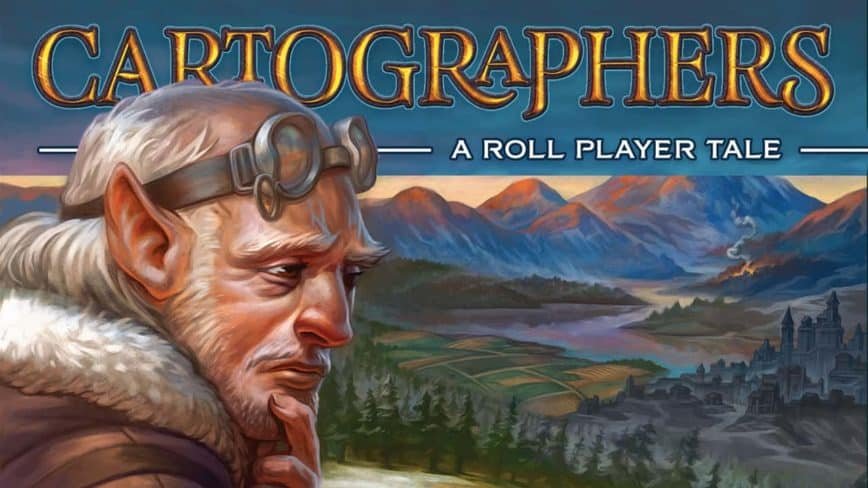Cartographers is a fairly straightforward game. However, Cartographers strategy isn’t straight forward at all. While making a map, you’ll be presented with many ways to score, and you must puzzle out the best way to do so by drawing shapes on your map in this Roll and Write game.
While a vast majority of your choices are very specific to your map and wholly unsuited for a strategy guide, there are a handful of general tips to improve your game.
So let’s get started.
Priorities
Cartographers is a game where you always have 10 goals to aim for, and not enough time or space to pursue them all. So much of the strategy comes down figuring out which goals to prioritize, and which goals to give less attention to.
Monsters Strategy in Cartographers
In the first half of the game, your first priority should generally be surrounding monsters if you’ve drawn any. A single unfilled square adjacent to a monster drawn in Spring is -4 points if you never fill it in, but in Winter, it’s only -1 point. Since removing a negative point is just as good as scoring a point, these should almost always be your highest priority. Especially when they come up early, since a single shape can frequently prevent the loss 8-16 points.
Coins Strategy in Cartographers
As a first rule of thumb, go aggressively for coins early. The same logic as monsters applies to coins: coins are incredibly good if you can get them in Spring, because they’re most valuable then. A single coin in Spring is worth 4 points, while in summer it’s worth 3, and in Winter, coins are only worth 1 point. When given the choice to take a smaller shape and a coin in Spring and Summer, it’s usually better to take the coin. Obviously, calculate if the other shape might be worth more, but going for the coin is always a safe bet when you’re not into doing math. This goes for surrounding mountains too, which is important early, and less important later.
In Fall and Winter, coins are just a solid bonus, but not always the right choice.
Predicting How Much a Card Can Score
So, its great to know that in each season, you will draw an average of 2 cards for each type of terrain (including split-choice terrains). You might draw 0 forests, or you could draw 4 forests, but you’d need some luck for either of those outcomes. You should plan for 2 cards.
On average, that means you will get to fill about 10 total grid spaces on your map with a single type of terrain, per season (if you always pick that type of terrain, and if you pick the larger blocks).
Now, what does this mean strategically? Well, when you’re choosing between terrain types to place, you can calculate how many points you’d get if got just two shapes of that terrain in that season.
I have some examples in the next section below.
Scoring Cards
What scoring cards you prioritize depends on what shape cards you’re drawing, what’s on the board already, what the other scoring cards are, etc. However, there are rules of thumb that I follow to make sure I get the most out of them. Much of what Cartographers strategy is, is prioritizing how you will aim for these score cards.
First of all, not all cards are as easy to score with as the others.
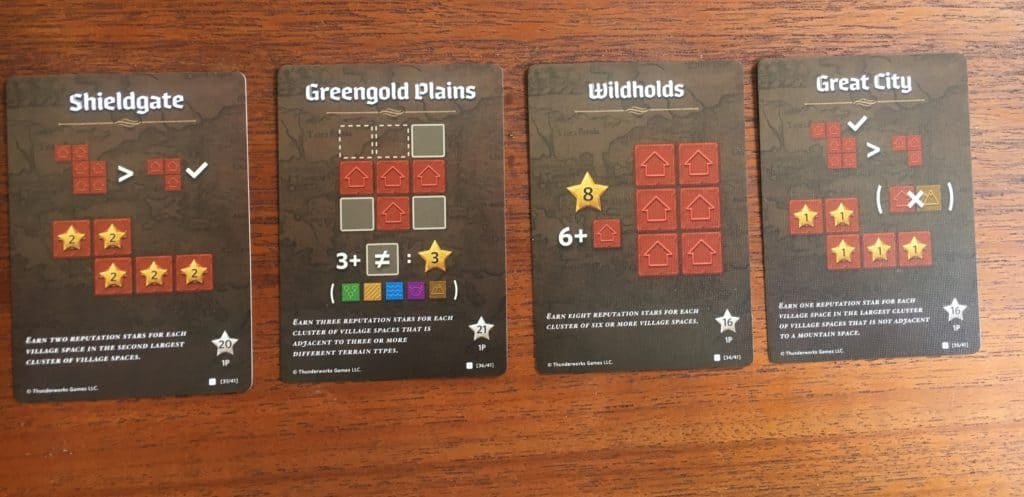
Given those averages in the section above, you can calculate how likely you’ll be able to score with each card. For example, if you had Wildholds in scoring spot B, you’d can expect 8 points in Spring, and 16 points in Summer, given a little luck, and some good planning. We can estimate this since luck says you ought to draw 2 house terrain cards in Spring for one group of 6, and another two in Summer, for your second group of six.
Remember that a group of 5 houses only needs a single tile to get to six, which means a single Riftlands could get you there if you plan for it (which means never put a Riftlands house into a group of 3-4 houses, as any two tiles can make six even without it), which means you might even get 16, then 24 points.
For the Great City in scoring space A, you can expect to score 10 points in Spring if you plan on taking the larger tiles, but as much as 40 points in Winter.
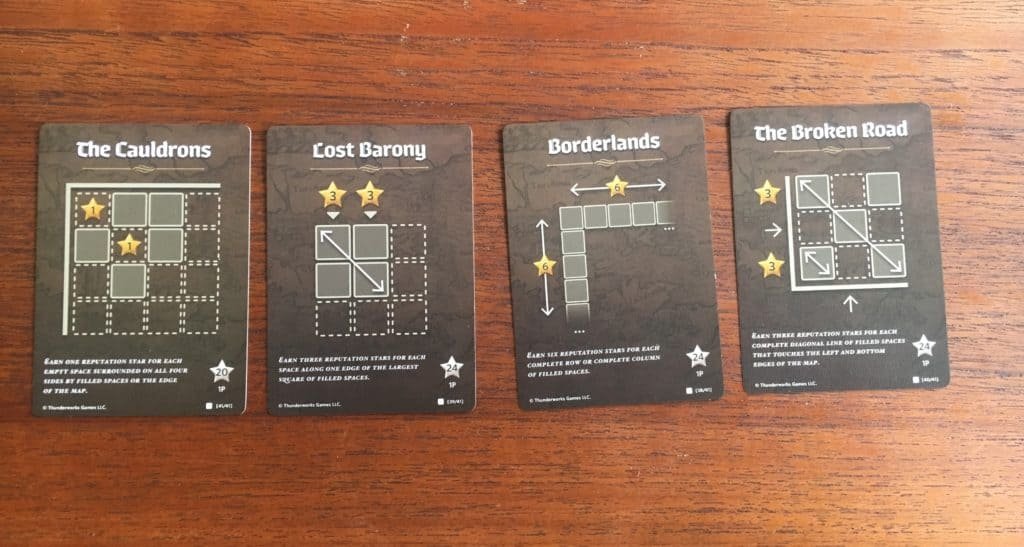
The score cards with the grey arrow backs can reliably score quite high: they all have the potential to double or triple the solo mode score in the lower right corner of the card (except The Cauldrons, which is just far harder to score with). If you have the Lost Barony, Borderlands or The Broken Road in positions A or D, with a little luck, you ought to be able to score 30+ points for it in a single season if you play your game around fulfilling that condition (and 50+ for Borderlands). These cards don’t care about which specific pieces you draw, so they are the most consistently high scoring cards. However, if it ends up in position B or you draw The Cauldrons, just know they are much harder to score for, and don’t worry about them as much.
These cards should generally inform how you place things. If you have The Broken Road, you ought to consider placing every piece in the bottom left corner, or as close as you can. For the Lost Barony, start around a mountain and work towards the middle of the map.
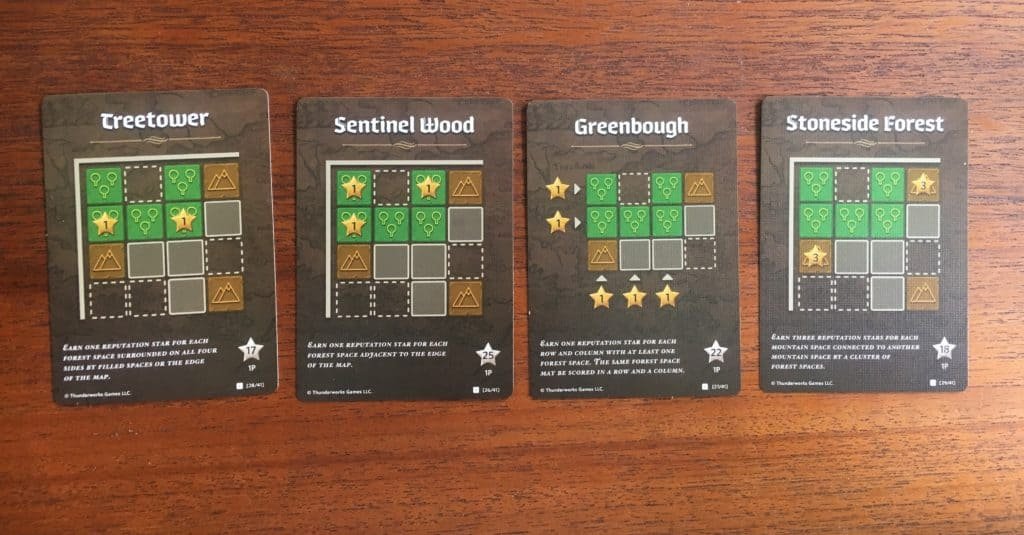
A lot of the advice above applies to these as well. For example, in a single season, expect two forests. So if Stoneside Forest is you A score card, it can score up to six points, but almost as likely to score 0 points, which isn’t great. So I’d choose not to prioritize it. On the other hand, Greenbough and Sentinel Wood can score nearly (and sometimes above) 1 point per tile you put down, which is worth prioritizing, especially if it scores late.

I actually like all four of these cards, they’re all capable of scoring really highly, especailly Shoreside Expanse, which can be very rewarding if well planned out. This one can lose points very easily unless you plan it out well though. The Golden Granary is great if you score for it early, since its one of the easier requirements to meet in the first turns, while guaranteeing some points.
Calculating Scores
Now, the game comes with an easy way to see how you’re doing. If you look in the bottom right corner of each scoring card, there’s a number. That’s the expected score for that card (used only for solo play). For each season, you can half that number and compare your score for that card to that number. If your score is smaller, then you’re behind. If it’s larger, then you’re ahead.
In the early seasons, you’ll often be behind, but for every point you miss early, you have to catch up on late. If you find that you’re always head of that curve, then you know you have a pretty strong Cartographers strategy. However, do note that sometimes, you will be way behind, since this game does have a lot of luck.
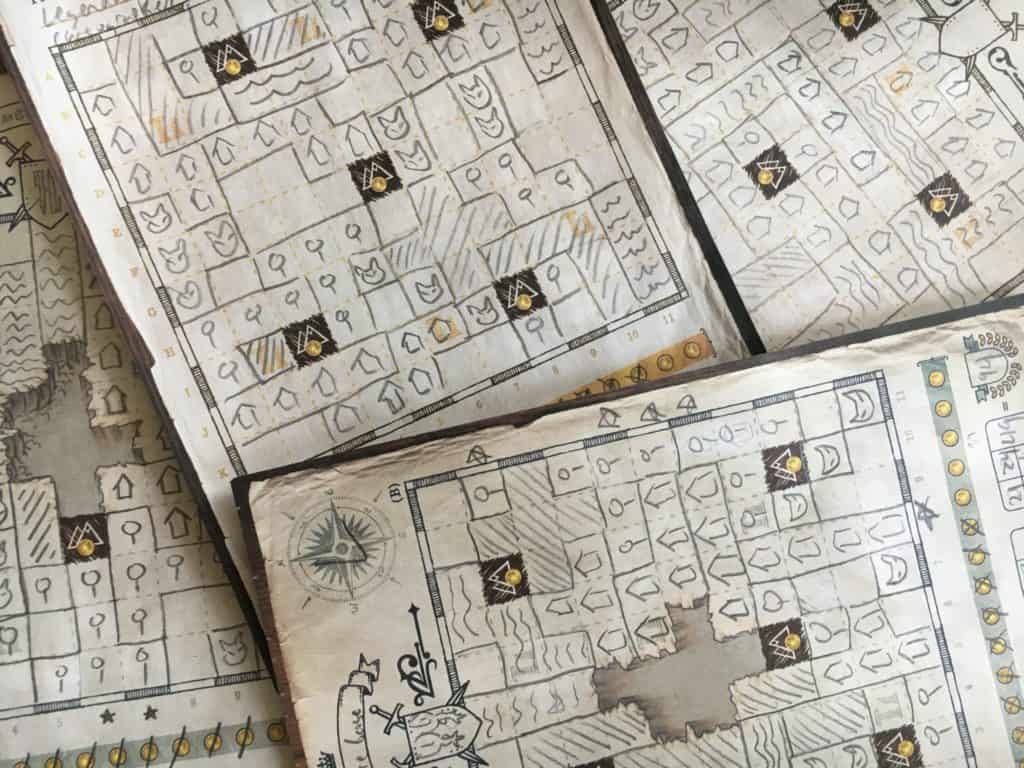
Conclusion
Well, I hope you liked it. Let me know if you have any Cartographers strategy tips for the game that I didn’t mention.
Maybe check out some of my other strategy guides if you liked this one.
